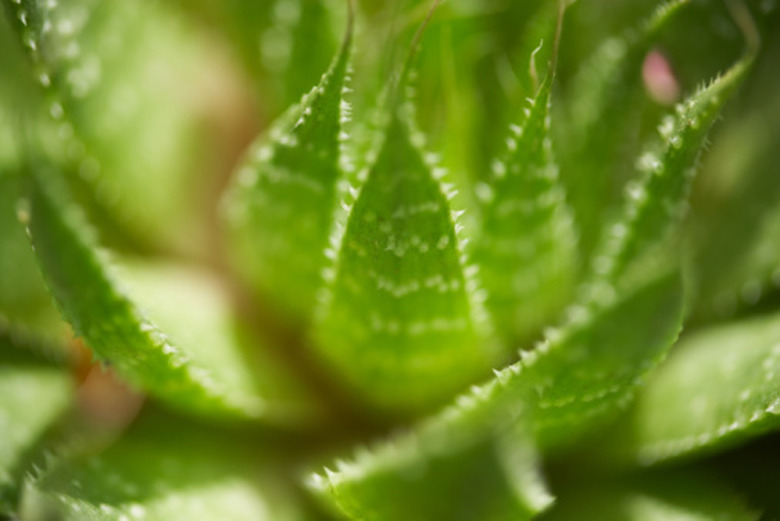Aloe Vera And Tuna Plants
Aloe and tuna are desert plants. Aloe vera is a clump-forming succulent with long, thick leaves. Tuna is a classification of cactus known as nopal in Latin American countries. Nopales are relatively rare in the United States though grow prolifically throughout Mexico, Central America, and the Caribbean. According to an article by Jon P. Rebman, Ph.D., all tuna plants were formerly of the genus Opuntia, though now belong to several genera thanks to the division of the genus by botanists.
Aloe Vera
Aloe vera, or Barbados aloe, is a species of the Aloe genus that grows naturally in Texas, Florida, and Puerto Rico. The plant has thick gray-green sword-shaped leaves that reach a mature length of 18 inches. Two-foot tall rosettes rise from the center of the plant, bearing yellow flowers in the winter and spring. Aloe vera is suited to growth in USDA Zones 8 through 11 and is drought tolerant. The plant has many medicinal uses. Its gel-like sap is used to treat burns and other wounds, and is believed to reduce the risk of infection. Aloe vera is used in soap, cosmetic creams, and shampoos.
- Aloe and tuna are desert plants.
- According to an article by Jon P. Rebman, Ph.D., all tuna plants were formerly of the genus Opuntia, though now belong to several genera thanks to the division of the genus by botanists.
Elephant Ear Prickly Pear
Elephant ear prickly pear (Opuntia tuna) is a true tuna plant of the tuna genus. According to the United States Department of Agriculture's Plant Database, the cactus is not known to occur naturally in the U.S. As with all tuna cacti, elephant ear prickly pear grows in paddle-shaped segments that form stems and bear large, individually formed spikes. Nathaniel Lord Britton writes in his book "The Cactaceae: Descriptions and illustrations of plants of the cactus family," that elephant ear prickly pear originated on the southern side of Jamaica and was, as of the beginning of the 20th century, still confined to the island nation. It is not cultivated by botanists and specialty gardeners in warm climates.
Indian Fig
Indian Fig (Opuntia ficus-indica) is also known as tuna cactus. The fruit and pads of the plant are edible, and commonly used in Mexican cuisine in dishes like tacos nopales and nopales con carne. Indian fig is a massive trunk forming segmented cactus that commonly reaches a height of 15 feet and a spread of 10 feet. The University of Arizona lists the landscaping applications of Indian fig as specimen plant, backdrop plant, fence or barrier plant, and a food sources for wildlife. Indian fig is adaptable to various soil types though will only flourish in full or reflected sun.
- Elephant ear prickly pear (Opuntia tuna) is a true tuna plant of the tuna genus.
- According to the United States Department of Agriculture's Plant Database, the cactus is not known to occur naturally in the U.S. As with all tuna cacti, elephant ear prickly pear grows in paddle-shaped segments that form stems and bear large, individually formed spikes.
Opuntia karwinskiana
Opuntia karwinskiana is a pad-forming Mexican cactus that does not have a name in the English and is commonly referred to in Mexico as a nopal. It is native to the Mexican states Oaxaca and Sonora. The pads of Opuntia karwinskiana, also known as Nopalea karwinskiana, form large, tree-like structures that reach a mature height of 6.6 to 23 feet. Stems segment, or pads, of the cactus are approximately 6 to 12 inches long and 2.2 to 3.1 inches wide.
